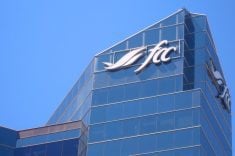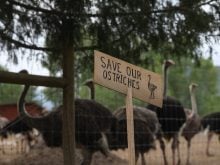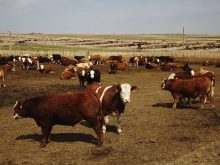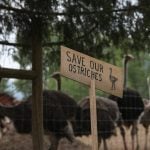New vaccines may help producers keep PCV2-related diseases out of their herds.
Four drug makers are in the process of releasing vaccines that will help build immunity to porcine circovirus type two, but none are available in Canada.
Researchers and veterinarians say PCV2 combines with a variety of other diseases, as well as elevated animal stress, to sicken and kill hogs.
PCV2-related diseases cycle in pig populations worldwide, with European producers especially hard hit.
First identified in a Saskatchewan herd in 1991, PCV2 is blamed for reducing revenue in Canadian herds by more than $50 million this year.
Read Also

Alberta rancher finds success with virtual fencing
Increased use of virtual fencing in cattle industry in Canada showcased at Innovation on the Range in Southern Alberta.
The majority of this lost income is in Ontario and Quebec, but Alberta and Manitoba are also under significant pressure from the disease.
PCV2 often manifests itself as post-weaning multi-systemic wasting syndrome or as pneumonia in pigs between six and 16 weeks old, but a variety of symptoms and disease occur. All result in lost production.
Clinical signs include progressive wasting such as in PMWS, respiratory problems, shaker pigs, enlarged lymph nodes, skin lesions, diarrhea and dsypnea.
“PCV2 is in every (hog) barn in the world,” said John Harding, a veterinary researcher and instructor at the Western College of Veterinary Medicine in Saskatoon.
“It is likely in nearly every pig and it sits in their large immune system cells until something triggers it. What exactly we aren’t sure. Some suspect an X factor that we have yet to find.”
After entering the body the virus is absorbed by large, immune system defence cells.
Harding said the PCV2 remains stable in these cells until it is triggered to start reproducing, which often happens at the same time as the infected immune system cells are called into action to fight another disease.
The process appears to carry the virus into large organs that are already under attack by the other invader. There the PCV2 multiplies and what might have been a small bacterial co-infection becomes systemic and life threatening.
Swine veterinary specialist Frank Marshall from Camrose told producers attending a Prairie Swine Centre meeting at the end of March that it appears even routine vaccinations can trigger the disease. For example, mineral oil in water adjuvants appear to stimulate the multiplication of PCV2.
French veterinarian and researcher Francois Joisel of drug maker Merial has worked on that company’s vaccine in Europe. Circovac is an inactivated circovirus that is administered to the sow before farrowing. It passes its new antibodies to its piglets through colostrum.
The vaccine appears to create immunity to PMWS in weanlings for up to 15 weeks.
The vaccine has been available in the European Union for 18 months and has shown positive results in the more than 300,000 sows vaccinated, Joisel said.
Canadian Veterinary Drug Directorate officials have granted a permitted release of Circovac ahead of the usual licensing procedure. However inventories of the drug are too low to accommodate demand, Joisel said.
He said EU farms that have vaccinated average savings of $117 per sow per year from improved feed conversion and fewer sick and dead pigs.
As well, Intervet has obtained an emergency release permit for its still publicly unnamed vaccine and is taking orders. The vaccine is given to piglets at three and six weeks of age.
Two other vaccines are under regulatory review, but haven’t yet been released: one from WyethÐFort Dodge and the other from Boehringer Ingelheim.
Harding said vaccines are only part of the solution.
To keep losses low, producers should avoid activating the virus and keep viral loads to a minimum by using high-health herd management.














